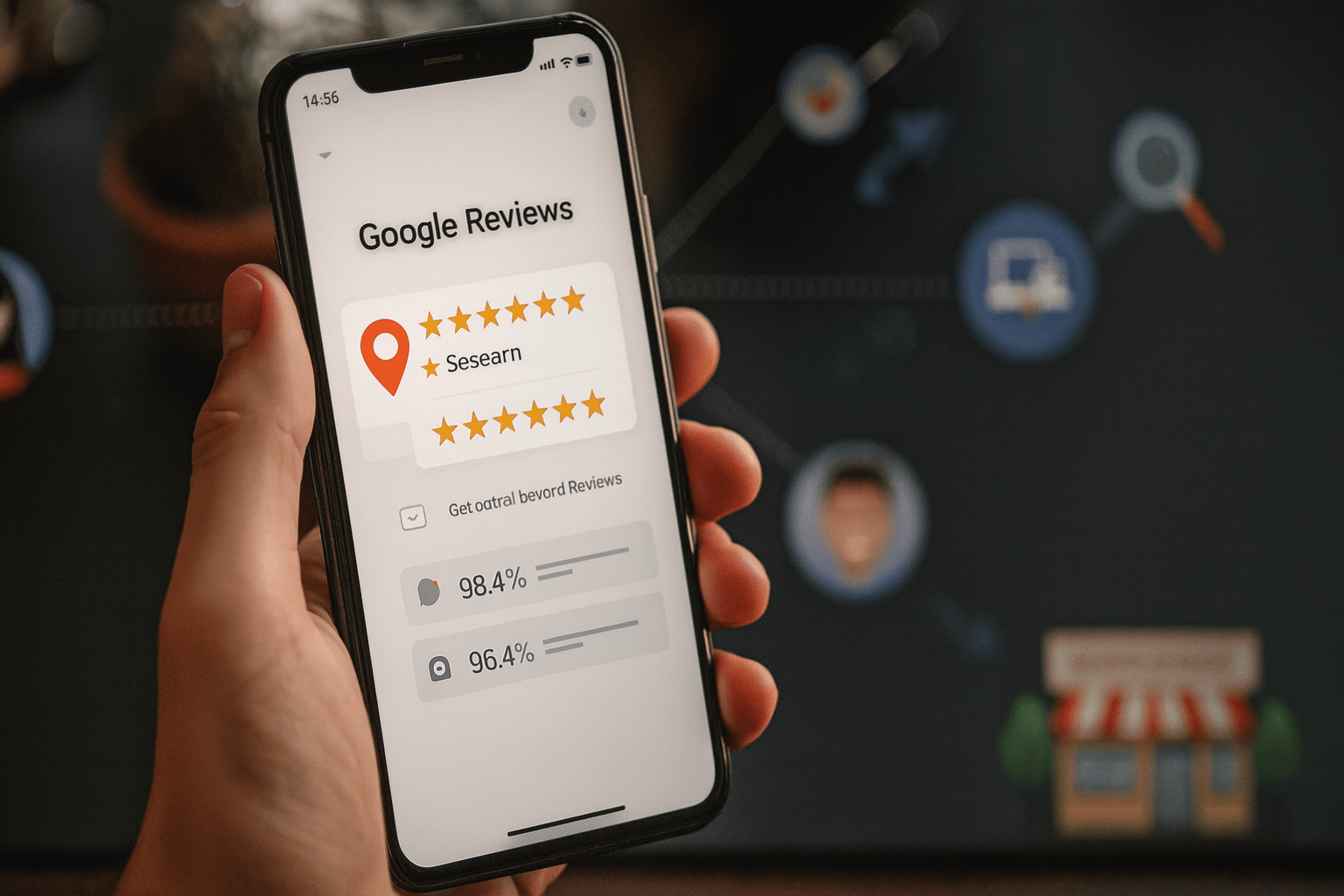Google Reviews Automation for Local Businesses

Did you know that 87 percent of consumers read online reviews before choosing a local business? A single five-star review can push a prospect to call, while one unanswered complaint can steer them toward a competitor. The challenge is that keeping up with reviews takes time, and most small business owners already juggle too many responsibilities.
That’s where automation steps in. By using smart tools to request, monitor, and respond to reviews, local businesses can strengthen their reputation without adding another manual task to the to-do list.
Why Google Reviews Matter for Local Businesses
Google reviews are more than digital word-of-mouth. They directly influence how businesses rank in local search results. When potential customers search “dentist near me” or “best HVAC service,” Google factors reviews into its algorithm. A higher star rating and steady flow of fresh reviews can push one business ahead of another, even if both are nearby.
Reviews also serve as social proof. A prospect deciding between two coffee shops will almost always choose the one with 4.7 stars and hundreds of glowing comments over the one with only a handful. Local businesses that invest in reviews not only improve visibility but also build trust at first glance.
Automating Review Requests
The hardest part about reviews is often just asking for them. Many satisfied customers walk away without leaving feedback because no one reminded them. Automating the review request process solves this.
For example, a dental practice can set up a system where patients receive a friendly text after their appointment: “Thanks for visiting today. We’d love your feedback. Share your experience here [link].” An HVAC company can send a similar request after a service call, ensuring every happy customer has the chance to leave a review.
Automation ensures consistency. Instead of relying on staff to remember to ask, every customer interaction becomes an opportunity. The volume of reviews grows steadily, which helps businesses outpace competitors who only gather feedback occasionally.
Responding to Reviews with Automation
Getting reviews is only half the battle. Responding to them is just as important. Customers want to see that a business listens and values feedback. A quick thank-you to a five-star review reinforces goodwill, while a calm and professional response to a complaint shows accountability.
Automation tools can draft and send these responses at scale. For example:
- 5-Star Reviews: “Thanks for your kind words, [name]. We’re glad you enjoyed your experience and look forward to serving you again.”
- 3-Star Reviews: “Thanks for sharing your feedback, [name]. We’d like to improve your experience. Please reach out so we can make it right.”
- 1-Star Reviews: “We’re sorry to hear about your experience, [name]. Our team will reach out directly to resolve this issue.”
While some replies may need a personal touch, automation ensures no review is ignored. Even a basic acknowledgment goes a long way in showing prospects that the business is active and attentive.
Integrating Reviews Into the Customer Journey
Automated review management isn’t just about collecting stars. It can be built into the entire customer journey.
- Before Service: Send reminders with clear expectations, reducing misunderstandings that might lead to negative reviews.
- After Service: Trigger review requests immediately while the positive experience is fresh.
- Ongoing Engagement: Share top reviews on social media or websites automatically to amplify social proof.
For instance, a property management company might integrate reviews into their leasing workflow. Prospective tenants see positive feedback on Google, which reassures them before scheduling a tour. After move-in, tenants receive an automated review request to keep the feedback loop alive.
This approach turns reviews from a passive byproduct into an active driver of marketing and reputation building.
Measuring Results and Improving Reputation
One of the overlooked strengths of automation is the data it provides. Businesses can track:
- Number of reviews requested versus completed.
- Average response time to reviews.
- Shifts in star ratings over time.
This data highlights where improvements are needed. For example, if customers consistently mention wait times in negative reviews, the business can address that issue directly. Over time, review automation doesn’t just generate feedback. It creates insights that guide business improvements.
Some platforms even benchmark performance against local competitors, showing exactly where a business stands. This helps owners set goals, like increasing average star ratings from 4.2 to 4.6 within six months.
Managing Google reviews doesn’t need to be overwhelming. By automating requests, responses, and integrations, local businesses can build a steady stream of authentic feedback that boosts visibility and trust.
The payoff is twofold: improved rankings in search results and stronger connections with customers who feel heard and valued. For small businesses competing in crowded markets, that edge can make the difference between steady growth and missed opportunities.
The question is simple. Are you letting reviews build your reputation on autopilot, or are you leaving them to chance?

































































